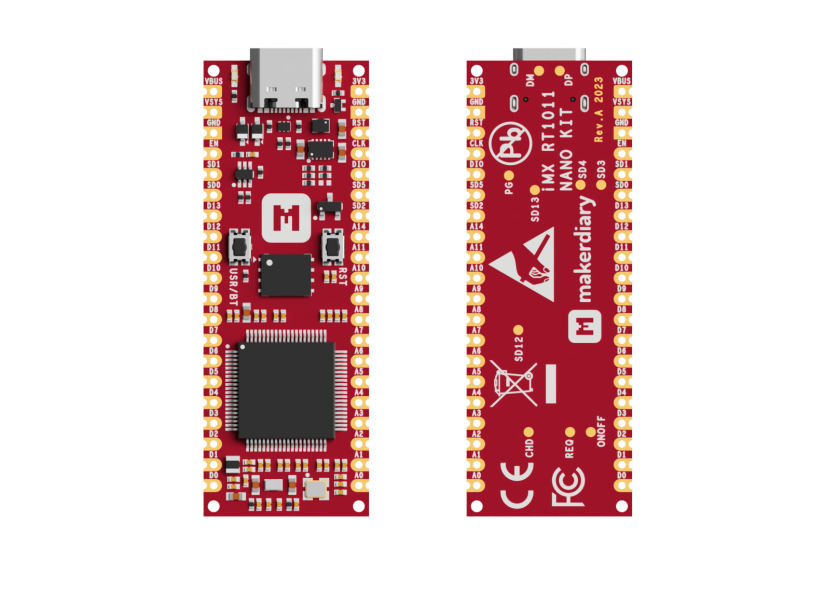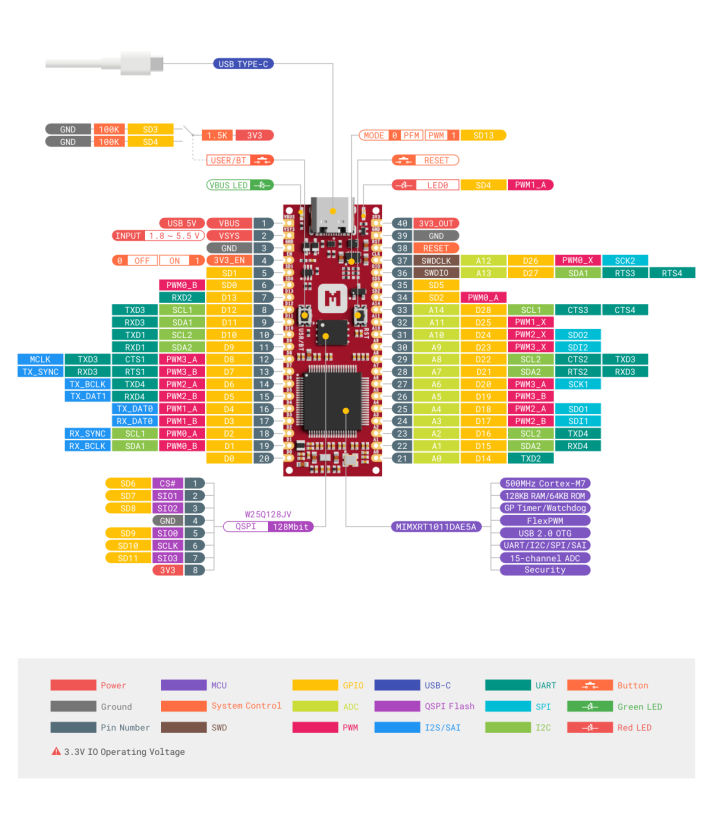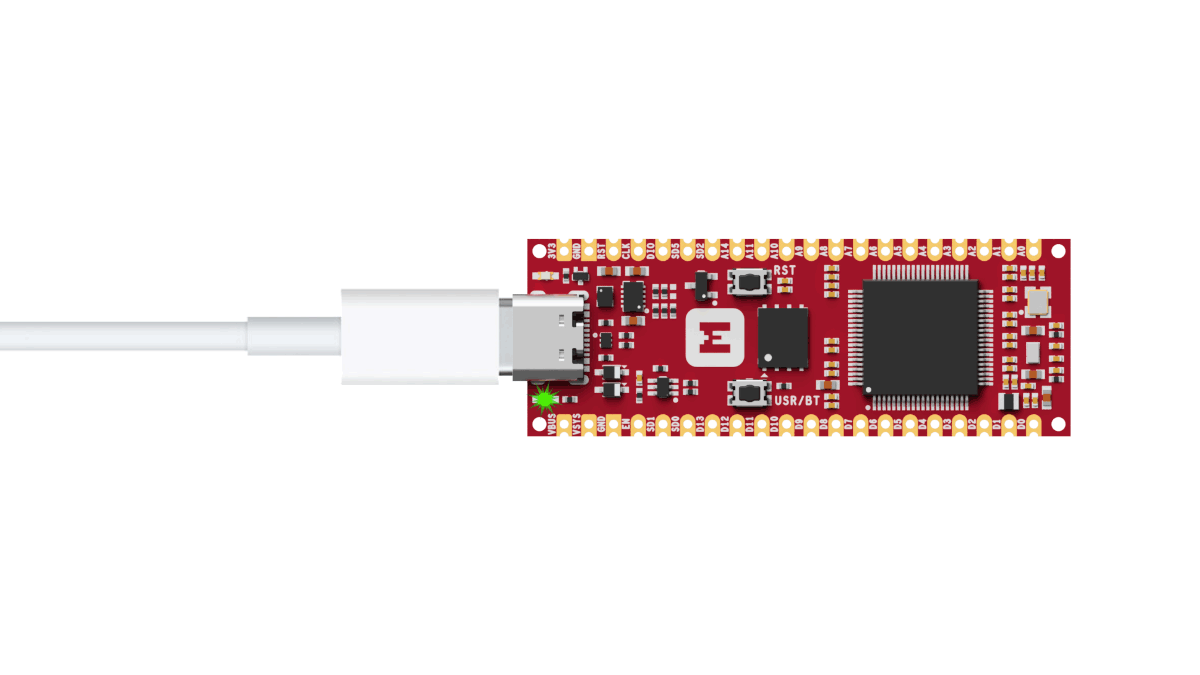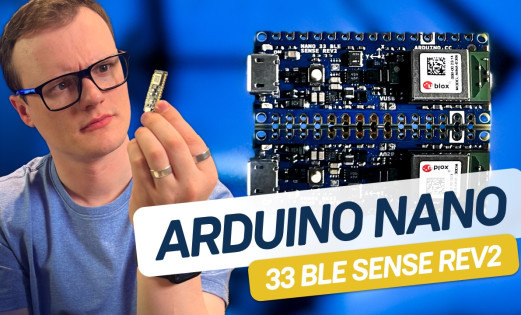iMX RT1011 Nano Kit: A $15 Microcontroller for Zephyr RTOS and CircuitPython
The iMX RT1011 Nano Kit from MakerDiary offers a remarkable combination of affordability and power for developers and hobbyists alike. Featuring NXP’s crossover MCU, the Cortex-M7 core runs at a speed of 500 MHz, which positions this board as a highly capable microcontroller for a wide range of embedded system projects.
Watch Ian discuss the Nano Kit in this episode of the Electromaker showAt just $15, this development board is an exceptional option for those who need performance without a high price tag. With support for Zephyr RTOS, users can explore advanced real-time operating system features, or opt for UF2 Bootloader for quick firmware updates. The flexibility extends further with the inclusion of a CircuitPython interpreter, providing an accessible development environment ideal for beginners.
Whether you’re prototyping IoT devices or learning more about embedded systems, the iMX RT1011 Nano Kit delivers versatility and performance in a small, affordable package.

Key Features and Capabilities
The iMX RT1011 Nano Kit is packed with features that make it stand out among other development boards in its price range. At its core is the Cortex-M7 MCU, running at an impressive 500 MHz, offering superior performance for both beginner and advanced developers. The board also includes 128 KB of on-chip RAM, flexible enough for general-purpose use or as tightly coupled memory (TCM), alongside external 128 Mbit QSPI Flash with XIP support.
What sets this board apart is its compatibility with Zephyr RTOS, an open-source real-time operating system designed for resource-constrained devices. This makes it ideal for developers working on IoT projects or real-time applications. Zephyr offers a modular architecture, giving users the flexibility to tailor the system to their specific needs while benefiting from a rich library of protocols, drivers, and security features.
For those seeking simplicity, the board also supports CircuitPython, a beginner-friendly environment that allows users to quickly program tasks like controlling LEDs or reading sensor data. The inclusion of UF2 Bootloader further simplifies firmware updates, making it easy to switch between development environments without the need for external tools.
These features, combined with extensive documentation and community support, make the iMX RT1011 Nano Kit a versatile and powerful choice for a variety of projects.

Getting Started with iMX RT1011 Nano Kit
Setting up the iMX RT1011 Nano Kit is straightforward, with support for multiple development environments depending on your needs. To begin, you can choose between using the UF2 Bootloader for quick firmware updates or dive deeper into embedded development with Zephyr RTOS.
For those opting for Zephyr RTOS, setting up the development environment requires following detailed guides available on MakerDiary's GitHub page. Zephyr RTOS enables developers to build advanced applications using real-time capabilities, hardware abstraction, and connectivity protocols. A variety of sample projects, such as "Blinky," help you get up and running quickly by building and flashing the firmware directly to the board.
If simplicity is your goal, CircuitPython provides an excellent alternative for rapid prototyping. The UF2 Bootloader enables drag-and-drop functionality, allowing users to easily flash CircuitPython onto the board and start writing code in minutes. Using editors like Moo or Thonny, users can program the board to control LEDs, read sensors, or interact with other components with minimal setup.
The flexibility in development environments, along with the comprehensive resources available on the MakerDiary GitHub page, makes getting started with the iMX RT1011 Nano Kit both accessible and efficient.

iMX RT1011 Nano Kit - Final Thoughts
The iMX RT1011 Nano Kit delivers exceptional performance and versatility at an affordable price, making it a standout choice for developers and hobbyists alike. Whether you're working with the Zephyr RTOS for real-time applications or using CircuitPython for rapid prototyping, this development board offers flexibility and power to meet various project needs. With extensive community support, documentation, and easy setup options, it's an ideal tool for those looking to explore embedded systems or IoT development.
If you're ready to get hands-on with this powerful microcontroller, check out the resources available on the MakerDiary GitHub page and start building your next project today.
Did you enjoy this article?
Make sure you subscribe to The Electromaker Show for similar content and subscribe to our monthly newsletter!













































Leave your feedback...